This easy and fast gochujang sauce is ready to add huge flavour and heat to all your favourite recipes (not just Korean)! Try it with stir fries, noodles, pasta and more.
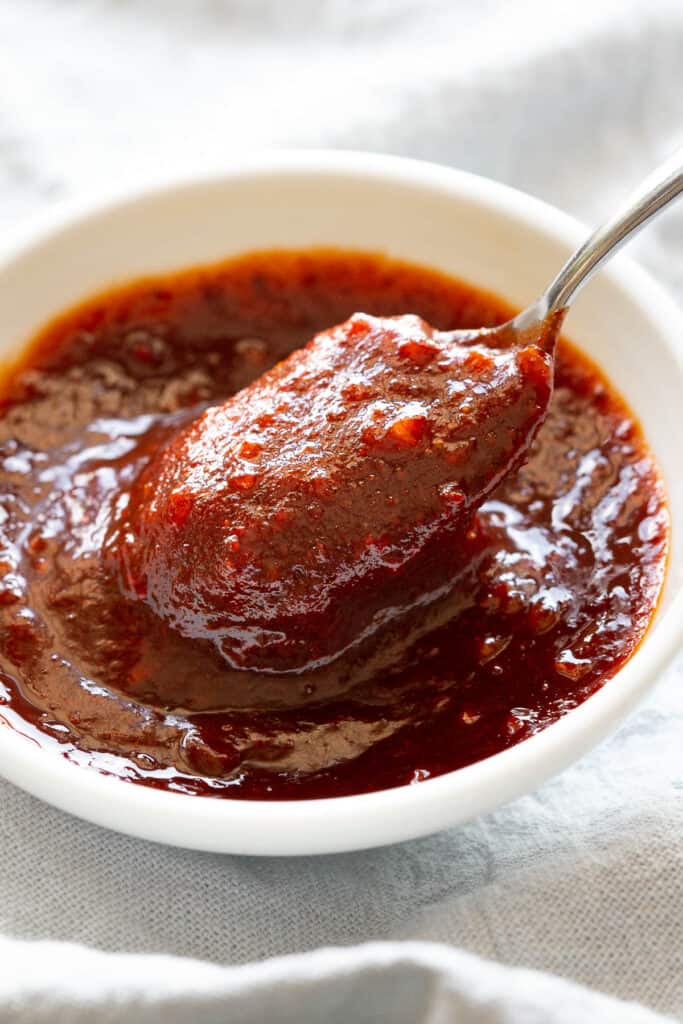
In This Post You’ll Learn
Why We Love This
This easy gochujang sauce is the perfect way to add huge flavour to your home cooked recipes. Use it as a seasoning for dishes like creamy gochujang pasta or Korean chicken burgers, or as a marinade in bulgogi chicken.
Like all homemade sauces, you can avoid artificial flavours or preservatives and easily control the quality of the ingredients you use.
This gochujang sauce recipe is also super adaptable to suit your tastes. Tweak the ingredients and ratios to make it spicier or sweeter, or tone down the heat for those who prefer less spice.
Related: Bulgogi Sauce / Yakisoba Sauce
Not familiar with Korean Gochujang or Gochugaru?
Check out our full guides and recipe ideas to learn all about Korea’s two most popular condiments – gochujang and gochugaru!
As a quick run down, Gochujang is a slightly spicy and sweet Korean hot pepper paste, while gochugaru is the name for Korean hot pepper flakes.
Learn about Gochujang – 15 Ways To Use Gochujang Korean Chili Paste
Learn about Gochugaru – 7+ Amazing Recipes To Make With Gochugaru Korean Chilli Flakes
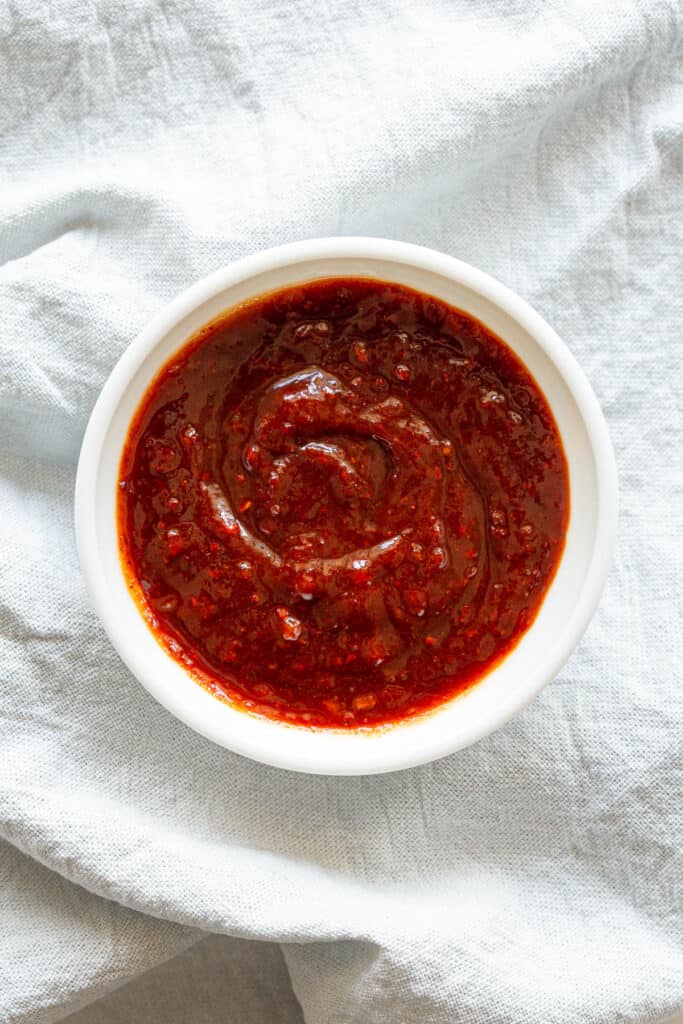
What is Gochujang Sauce?
Gochujang sauce is a homemade condiment used to bring well-rounded flavour, sweetness and spice to a whole range of recipes.
It’s made from a base of gochujang paste mixed with classic Korean seasonings like soy sauce, gochugaru / red pepper flakes, garlic and sesame oil.
Sarah loves to use it in many dishes, as it has an almost tomato like flavour to it from the peppers. It lends itself well to be used across both Eastern and Western dishes, so feel free to experiment with it!
Note: This gochujang sauce recipe is similar to our bibimbap sauce, but is made with doenjang (Korean miso) and gochugaru chilli flakes to make it punchier and more intense.
What You’ll Need
- Gochujang / Korean Hot Pepper Paste – This fermented Korean chilli paste is spicy, but has more of a well-rounded, sweet tomato flavour rather than just pure chilli heat. (Note: You can buy an extra hot version if you want!). It’s available at Asian grocery stores, well stocked supermarkets in the international aisle, or online. If you can’t source it, you can make a paste out of regular red chilli flakes mixed with sugar and a dash of soy. (Use 1 tablespoon of chilli flakes for every tablespoon of gochujang required).
- Gochugaru / Korean Red Chilli Flakes – It may also be labelled as Korean hot pepper powder. Most brands have clear packaging so you can see the product inside (which is important). Ideally you should buy the flakes, NOT the powdered version. Look for it at Asian supermarkets or online. Sub with half the listed amount of cayenne pepper or regular chilli powder.
- Doenjang / Fermented Soybean Paste – This is a concentrated Korean condiment made from fermented soy beans, similar to Japanese miso paste except stronger and funkier. Sub with red miso or extra soy sauce if you need.
- Rice Wine Vinegar – Can also be labelled as rice vinegar (they’re the same thing). Adds subtle acidity and sweetness to the sauce. Sub with half the amount of any other kind of vinegar. Once mixed, you can then taste and add more if you like.
- Other Seasonings – You’ll also need garlic, soy sauce, sesame oil and sugar (sub with honey or maple syrup if you prefer).
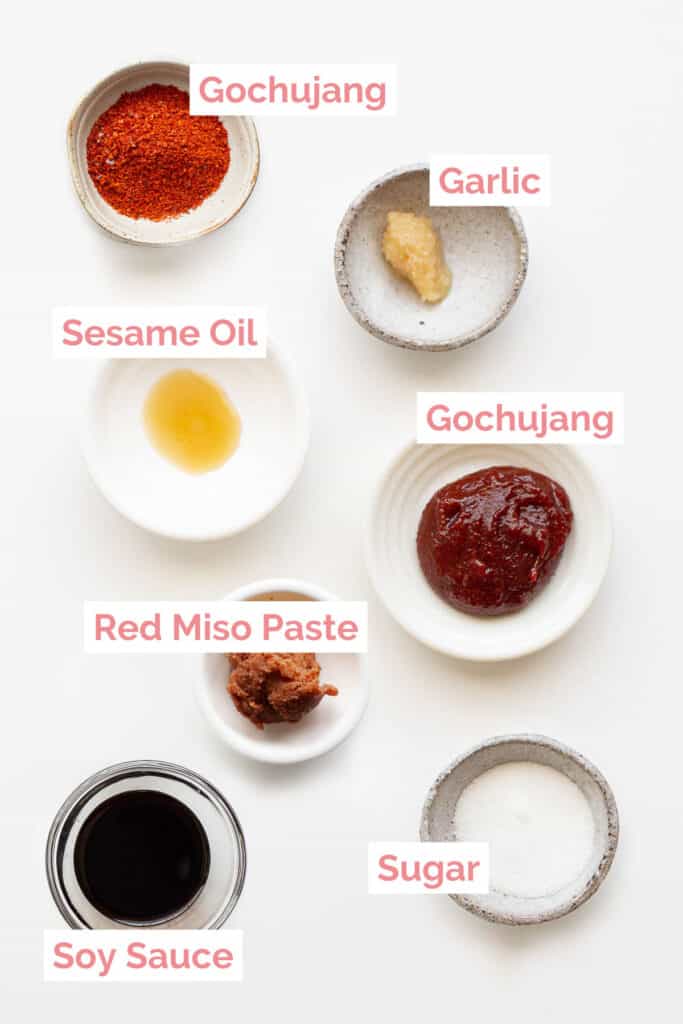
How to Make Gochujang Sauce
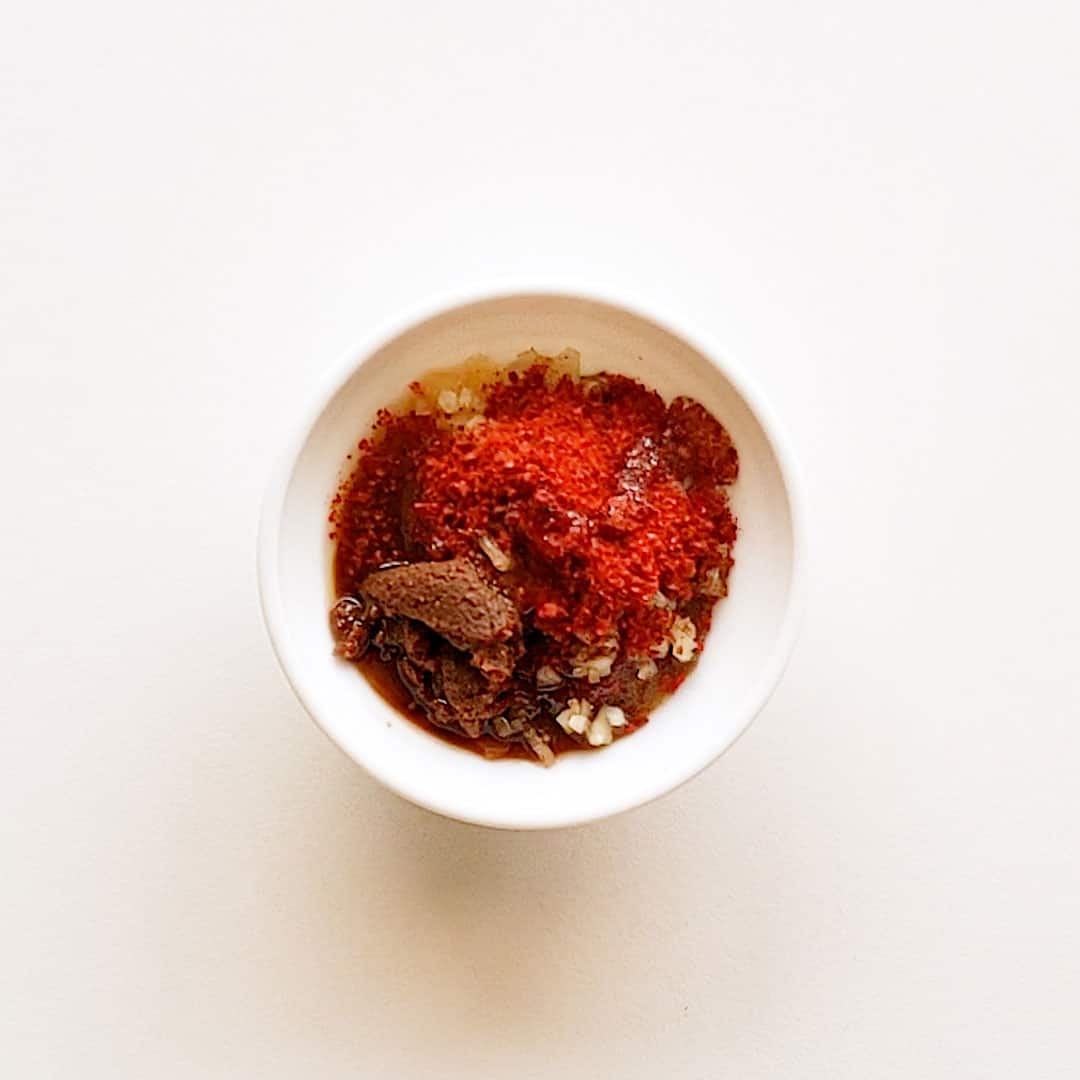
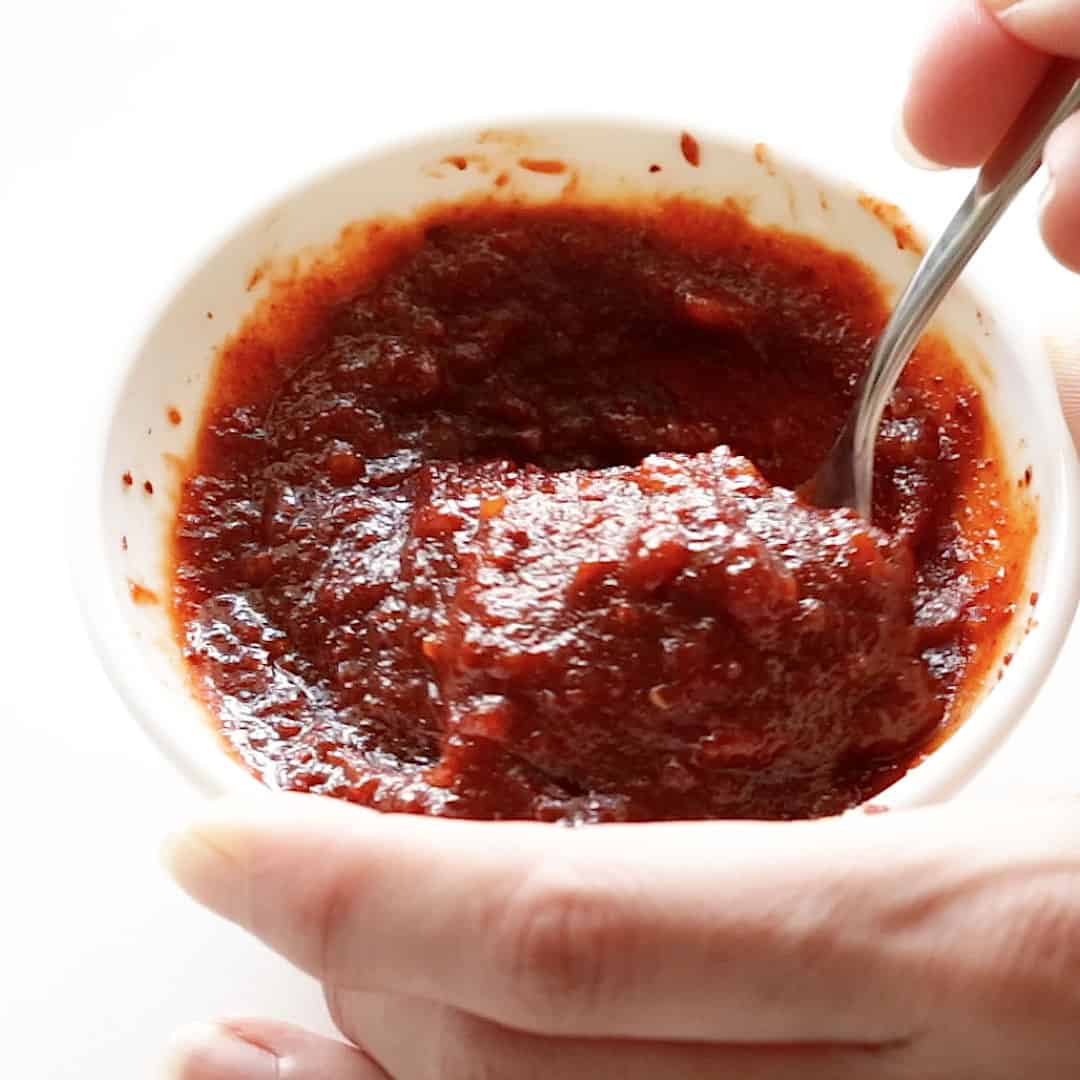
First, gather your ingredients: See recipe card below for measurements.
- In a small bowl, add your gochujang, sugar, garlic, soy sauce, gochugaru, doenjang / miso, rice wine vinegar and sesame oil.
- Using a spoon or whisk, mix until completely combined. Use straightaway as a sauce base, marinade or stir fry, or transfer to an airtight container and store in the fridge or freezer until you’re ready.
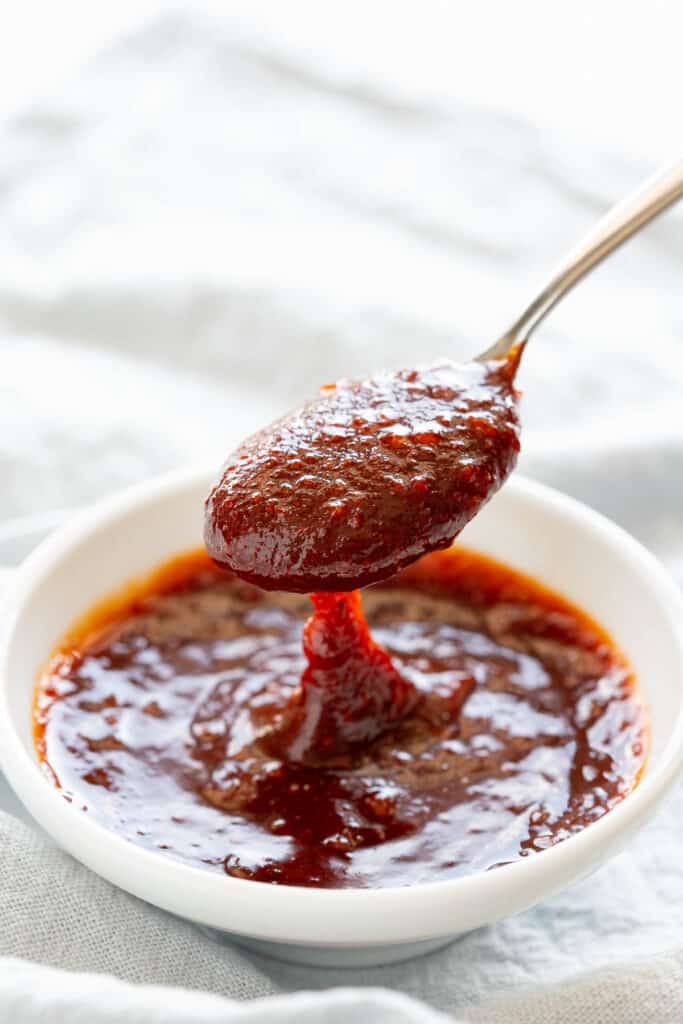
Wandercook’s Tips
- Storage – Store leftover sauce in an airtight container in the fridge for 2-3 weeks, or in the freezer for 2-3 months.
FAQs
As this sauce is quite similar to bibimbap sauce, you can use it in homemade rice bowls like chicken bibimbap.
It’s also a great substitute for ssamjang dipping sauce for bulgogi beef lettuce wraps. You can also make some in advance and keep it on hand as a quick base for Korean army stews or as stir fry sauce for spicy pork, or chicken dakgalbi.
Add a little water to thin it down and use as a basting sauce for tteokkochi rice cake skewers, or as a dipping sauce for gamja jeon potato pancakes or haemul pajeon seafood pancakes.
You can also make Korean chicken burgers and slather this sauce on the outside of the patties! Or add it to pizza sauce on your next batch of homemade Italian pizza dough for a spicy kick.
Gochujang is not too spicy. It’s gochugaru (the hot pepper flakes) that pack much more heat. You can play with the amount of either to adjust the spiciness in your homemade sauce.
Mostly – you’ll need to carefully check the label on your Korean fermented soybean paste (doenjang ) though, as many brands contain fish for added umami flavour. Leave it out or sub with miso paste if you need.
Variations
- Too Spicy? – Use less gochugaru or leave it out completely.
- More Umami – Add a splash of dashi stock for extra savoury flavour. You can also use dashi stock to thin out the consistency a little bit.
- Add Nuttiness – Add toasted sesame seeds or gomashio sesame salt (whole or ground) to taste.
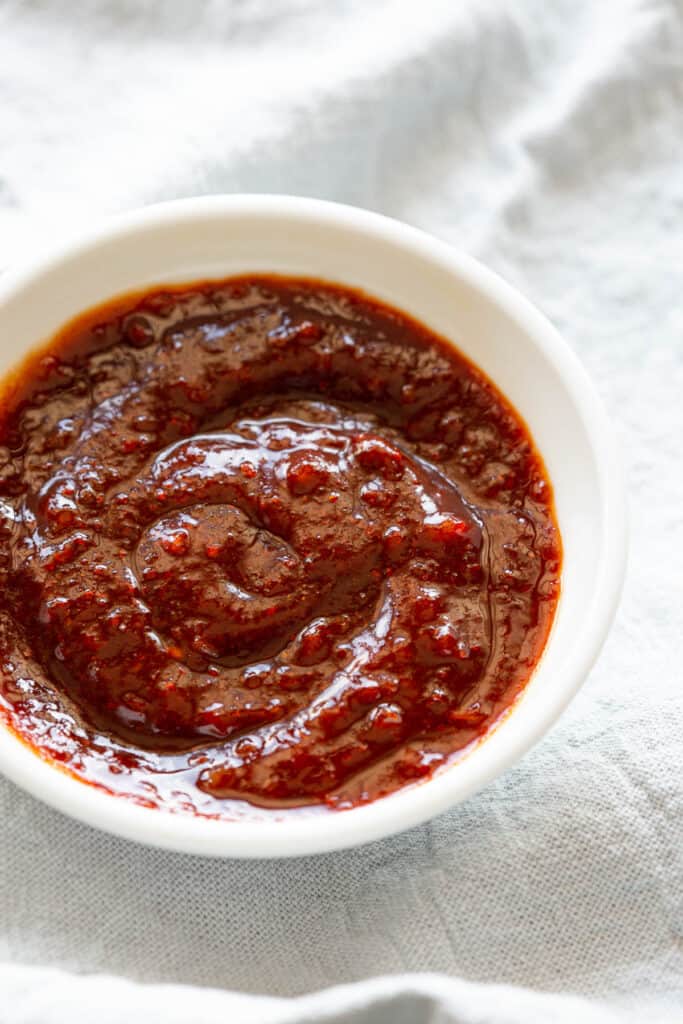
Get cooking with these favourites next:
★ Did you make this recipe? Please leave a comment and a star rating below!
Ingredients
- 2 tbsp Korean hot pepper paste / gochujang
- 1 ½ tbsp sugar sub honey
- 1 tbsp garlic
- 1/2 tbsp soy sauce
- 1/2 tbsp Korean hot pepper flakes / gochugaru
- 1 tsp fermented soybean paste / doenjang sub red miso paste
- 1 tsp rice wine vinegar
- 1 tsp sesame oil
Instructions
- In a small dish, add your gochujang, sugar, garlic, soy sauce, gochugaru, doenjang / miso, rice wine vinegar and sesame oil.2 tbsp Korean hot pepper paste / gochujang, 1 ½ tbsp sugar, 1 tbsp garlic, 1/2 tbsp soy sauce, 1/2 tbsp Korean hot pepper flakes / gochugaru, 1 tsp fermented soybean paste / doenjang, 1 tsp rice wine vinegar, 1 tsp sesame oil
- Using a spoon, mix until completely combined. Use straightaway as a sauce base, marinade or stir fry, or transfer to an airtight container and store in the fridge or freezer until you're ready.
Video
Recipe Notes
- Storage – Store leftover sauce in an airtight container in the fridge for 2-3 weeks, or in the freezer for 2-3 months.
- Too Spicy? – Use less gochugaru or leave it out completely. Gochugaru (the hot pepper flakes) are much spicier than the gochujang paste.
- More Umami – Add a splash of dashi stock for extra savoury flavour. You can also use dashi stock to thin out the consistency a little bit.
- Add Nuttiness – Add toasted sesame seeds or gomashio sesame salt (whole or ground) to taste.
Nutrition
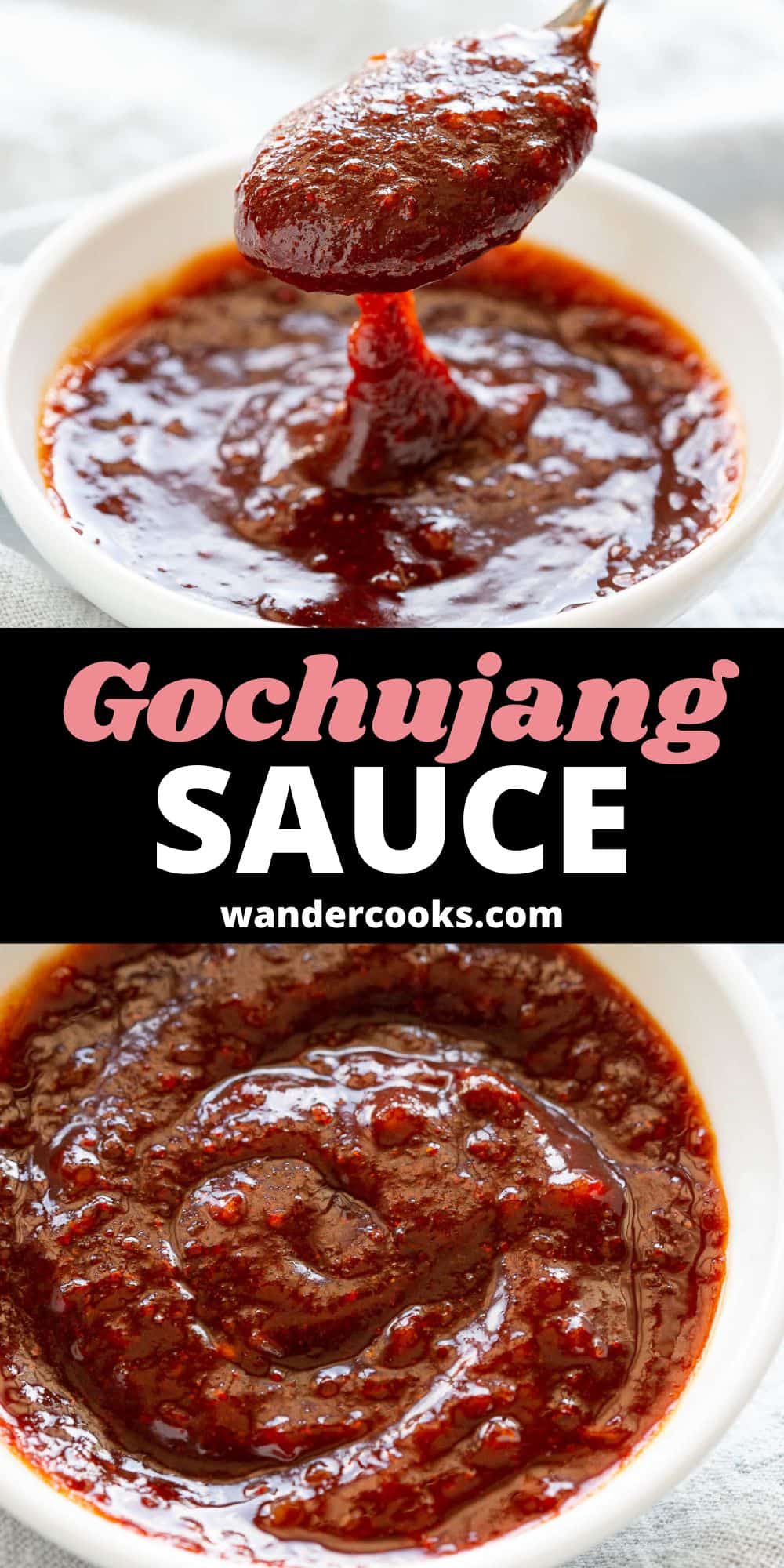

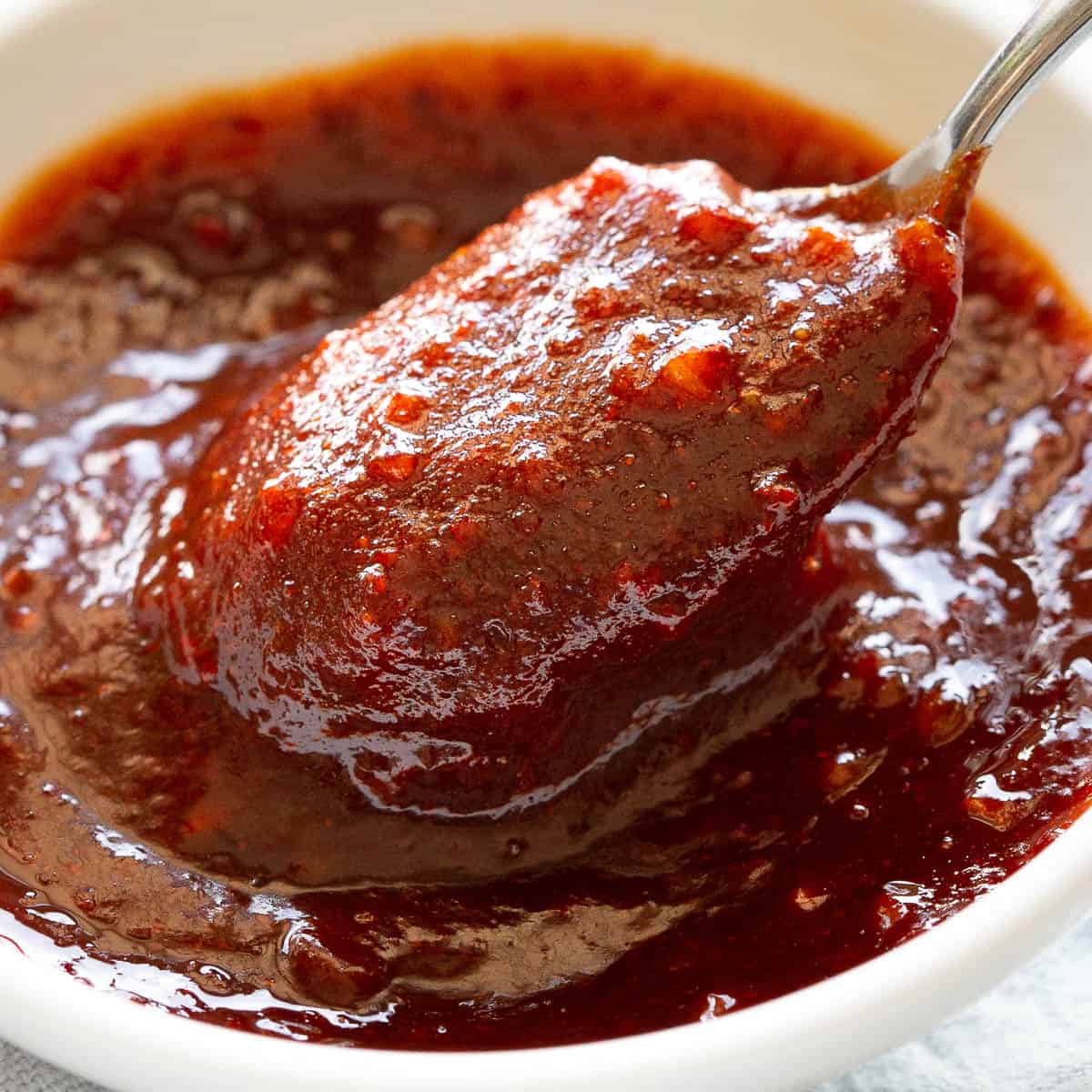


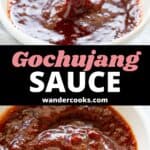
No Comments